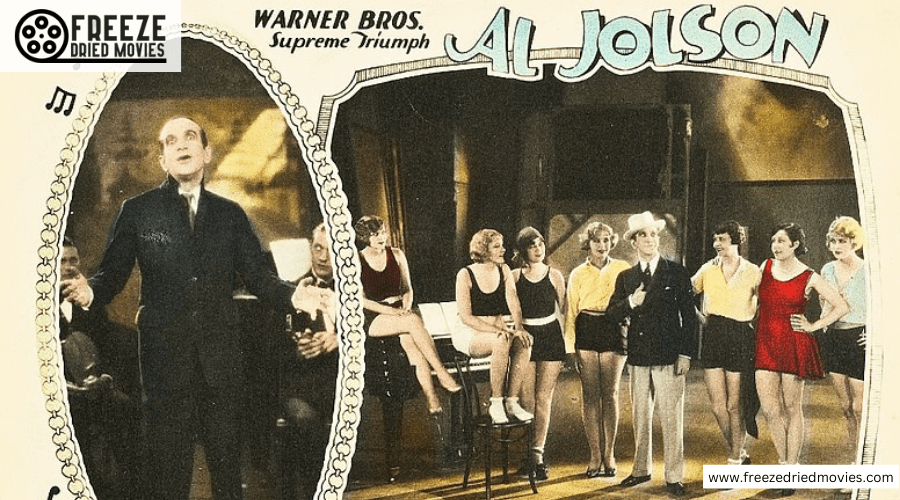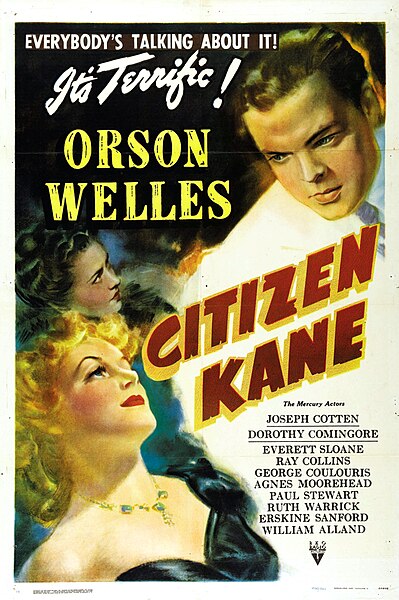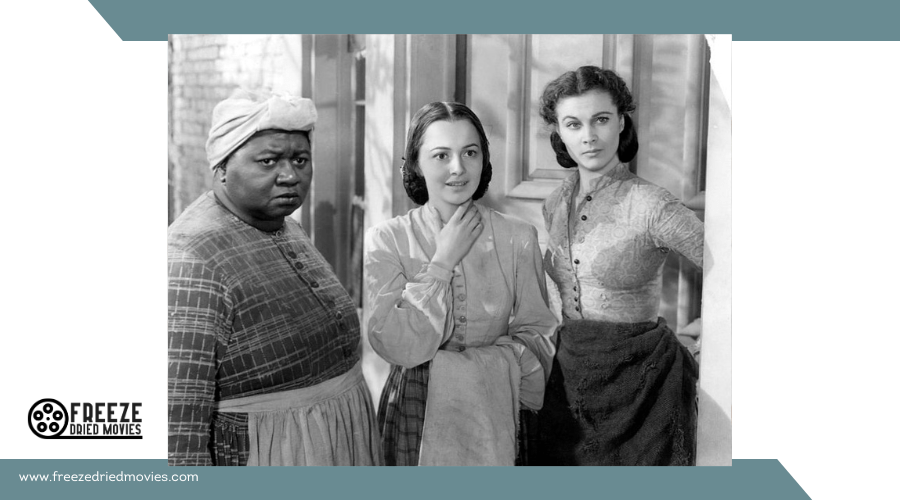The Role of Cinematography in 1930s Films: Visual Storytelling

Consider the 1930s as a pivotal decade in the evolution of cinematography, fundamentally shaping visual storytelling in film. The advent of three-strip Technicolor and deep focus techniques enabled filmmakers to create scenes rich in detail and emotion. The introduction of synchronized sound necessitated new lighting and camera strategies, compelling directors and cinematographers to innovate continually. These advancements not only enhanced visual appeal but also redefined Hollywood cinema. Curious about the key figures who drove these changes and the challenges they faced? Let's explore how their contributions laid the groundwork for future cinematic masterpieces.
Historical Evolution of Cinematography
In the late 19th century, the invention of the motion picture camera revolutionized how we capture and view moving images. Early pioneers like Eadweard Muybridge laid the groundwork with his horse motion studies, introducing preliminary cinematic techniques. The Lumière brothers' cinematograph in 1895 marked a crucial moment by enabling the first public film screenings, setting the stage for cinema's evolution.
As you trace the historical evolution of cinematography, you'll observe significant strides in visual style and film quality. By the 1920s, filmmakers began exploring innovative lighting techniques, including three-point lighting, which became an industry standard. This method enhanced mood and visual storytelling, making films more engaging and emotionally resonant.
During the Golden Era of Cinema, directors and cinematographers continually pushed the boundaries of visual storytelling. They refined cinematic techniques to create distinct visual styles that captivated audiences. This period saw advancements in camera movements, framing, and the sophisticated use of light and shadow. These improvements not only elevated film quality but also influenced future generations of filmmakers, laying a robust foundation for modern visual storytelling.
Technological Advancements in the 1930s
The 1930s ushered in significant technological advancements that revolutionized the film industry. Following the introduction of synchronized sound with "The Jazz Singer" in 1927, filmmakers had to adapt their techniques to incorporate audio effectively. This shift necessitated new camera setups and quieter equipment, ensuring high-quality sound recording and transforming scene shooting and editing processes.
The decade also saw the rise of three-strip Technicolor, which dramatically enhanced film aesthetics. This innovation offered a vibrant and dynamic visual experience, influencing cinematographic choices profoundly. The creative use of color opened new avenues for storytelling and character development.
Advancements in lighting technology during the 1930s played a crucial role as well. Improved lighting allowed filmmakers to create more dramatic and atmospheric scenes, thereby enhancing the visual quality and emotional impact of films.
New camera techniques, such as deep focus and dynamic shot compositions, emerged, enabling more complex visual storytelling. These developments provided directors with greater flexibility and creative control. Although the initial transition to sound led to a temporary decrease in film quality, this period of experimentation and refinement ultimately elevated the craft, seamlessly integrating special effects into narratives.
Visual Storytelling Techniques
The 1930s saw pivotal technological advancements in cinema, but it was the visual storytelling techniques that truly defined the era's artistic achievements. Cinematographers utilized these methods to enhance narrative depth and emotional impact.
First, the advent of three-strip Technicolor revolutionized visual storytelling. Films like "The Wizard of Oz" (1939) employed vibrant colors to convey emotions and enhance narrative depth, making scenes more captivating and memorable. Second, the use of deep focus allowed both foreground and background elements to remain clear, enabling more intricate visual compositions. This technique, predating its renowned application in "Citizen Kane" (1941), allowed filmmakers to craft richer stories within a single frame.

Third, the transition to synchronized sound introduced new challenges. Cinematographers had to modify their lighting and framing techniques to accommodate dialogue, resulting in innovative shot compositions that harmonized visual and auditory storytelling. Techniques such as chiaroscuro lighting became vital in establishing mood and character dynamics, particularly in film noir, where dramatic lighting created tension and intrigue.
Moreover, camera movement and framing techniques, including tracking shots and close-ups, were employed to direct audience focus and heighten emotional engagement. These methods shaped the visual language of 1930s cinema, illustrating the transformative power of cinematography in visual storytelling.
Impact on Hollywood Cinema
Technological innovations like three-strip Technicolor and synchronized sound revolutionized Hollywood in the 1930s. These advancements enhanced visual appeal and introduced new narrative complexities, necessitating fresh approaches to cinematography. Additionally, the studio system promoted unprecedented collaboration, compelling filmmakers to elevate their craft and redefine visual storytelling.
Technological Innovations
The technological innovations of the 1930s marked a dramatic shift in cinematic history, transforming Hollywood cinema. The introduction of synchronized sound with films like "The Jazz Singer" (1927) revolutionized film production, enabling more intricate editing techniques and enhancing storytelling methods.
Three key technological advancements stood out:
- Three-strip Technicolor: Introduced in 1932, this innovation brought vibrant color palettes to the screen, enriching visual storytelling by adding emotional depth and aesthetic appeal, as seen in "Becky Sharp" (1935).
- Advanced Lighting Equipment: New lighting technologies allowed cinematographers to explore dynamic shot compositions and mood creation, improving the visual quality of films and enabling more sophisticated and expressive scenes.
- Deep Focus Techniques: Emerging in the 1930s, this technique, which kept both foreground and background in sharp focus, paved the way for more intricate visual storytelling. Although perfected in "Citizen Kane" (1941), its roots trace back to this transformative decade.
These innovations not only altered the visual landscape but also fostered deeper collaboration between directors and cinematographers, leading to more complex and engaging film productions.
Narrative Complexity
Building on the technological advancements of the 1930s, Hollywood cinema experienced a surge in narrative complexity. The transition from silent films to sound films enabled filmmakers to use dialogue-driven storytelling to develop characters more deeply. Directors like Frank Capra and William Wyler employed innovative lighting and camera angles to create tension and highlight conflicts, adding rich layers to their narratives.
The introduction of three-strip Technicolor in 1935 revolutionized visual storytelling. Filmmakers used color palettes to convey emotional undertones and themes, significantly enriching narrative complexity. The development of deep focus cinematography allowed filmmakers to keep multiple planes of action in focus simultaneously, providing context and depth within a single shot. This technique reached its pinnacle in films like "Citizen Kane" (1941).

The 1930s also saw a blending of genres, such as social dramas interwoven with gangster films, which addressed contemporary issues like the Great Depression. This melding created intricate and socially relevant narrative structures that were both engaging and thought-provoking.
Key elements contributing to this narrative complexity include:
| Key Element | Impact on Narrative Complexity |
|---|---|
| Sound Films | Enhanced dialogue-driven storytelling |
| Three-strip Technicolor | Conveyed emotional undertones through color |
| Deep Focus Cinematography | Provided context and depth in single shots |
| Genre Blending | Created intricate, socially relevant plots |
Cinematic Collaboration
Cinematic collaboration in the 1930s fundamentally transformed Hollywood, ushering in a golden era of filmmaking. Directors and cinematographers didn't just work together; they formed creative partnerships that elevated narrative complexity and visual storytelling. Iconic filmmakers like Alfred Hitchcock and Ernst Lubitsch exemplified this, developing distinct visual styles through close collaboration with their cinematographers.
Here's how these collaborative efforts impacted Hollywood cinema:
- Synchronized Sound: The advent of synchronized sound required cinematographers to adapt their techniques. Lighting and shot composition had to accommodate new sound recording equipment, ensuring seamless integration of audio and visuals.
- Technicolor Process: The late 1930s saw the rise of the three-color Technicolor process, necessitating meticulous planning among directors, cinematographers, and production designers to create visually cohesive and emotionally engaging films.
- Studio System: The studio system fostered an environment conducive to collaboration, allowing cinematographers to experiment across genres and styles. This resulted in a diverse and rich tapestry of visual storytelling that defined American cinema.
These collaborative efforts not only enhanced individual films but also set industry standards, cementing the 1930s as a transformative period in Hollywood's visual storytelling.
Key Figures and Contributions
The 1930s were a transformative decade for cinematography, driven by the groundbreaking contributions of several key figures. Alfred Hitchcock stands out for his innovative use of cinematography to create suspense. He worked closely with cinematographers to craft visual narratives that kept audiences on the edge of their seats. His films like "The 39 Steps" and "Sabotage" exemplify how careful camera work can amplify tension and story depth.
Additionally, the introduction of Technicolor redefined film aesthetics. This three-strip color process allowed for vibrant hues that brought stories to life in a new, emotionally impactful way. "The Adventures of Robin Hood" (1938) is a notable example, showcasing how color could transform the visual storytelling landscape, making scenes more engaging and emotionally resonant.

The contributions didn't stop there. Gregg Toland's pioneering use of deep focus allowed for more complex and layered scenes. By keeping both the foreground and background in sharp focus, Toland added a new dimension to narrative depth. This technique became a hallmark of 1930s cinematography, setting the stage for future advancements.
These visionaries, through their groundbreaking work, enhanced the art of visual storytelling, making the 1930s a crucial period in cinematic history.
Challenges and Opportunities
The 1930s were marked by groundbreaking contributions from key figures and also presented significant challenges and opportunities for cinematographers. The introduction of synchronized sound posed immediate challenges, as filmmakers had to adapt to new technology and techniques, often resulting in an initial dip in film quality. Maintaining visual storytelling became more complex with the integration of dialogue and sound effects.
How These Challenges and Innovations Unfolded:
- Lighting and Camera Movement: With sound now an essential part of cinema, cinematographers had to innovate in lighting and camera movement to ensure the visuals remained compelling. The camera's movement became restricted to avoid capturing unwanted noise, and lighting setups had to be meticulously planned to prevent casting shadows on microphones.
- Technicolor: The late 1930s saw the advent of three-strip Technicolor, which opened new avenues for vibrant visual storytelling. Films like "The Adventures of Robin Hood" (1938) demonstrated how color could enhance emotional impact and bring stories to life in unprecedented ways.
- Experimental Opportunities: The evolving period provided lesser-known filmmakers and cinematographers with opportunities for experimentation. They pushed visual styles and dared to innovate, laying the groundwork for future cinematic techniques.
Despite these challenges, the 1930s were a time of resilience and ingenuity, showcasing how cinematographers could adapt and thrive amid technological upheaval.
Legacy and Future
The legacy of 1930s cinematography marks a pivotal era that fundamentally reshaped the visual language of film. The introduction of three-strip Technicolor didn't merely add color; it revolutionized visual aesthetics and enhanced emotional storytelling. Filmmakers harnessed this technology to create more vivid and engaging narratives, fostering a deeper connection between audiences and on-screen characters and stories.
The era was also notable for its experimentation with deep-focus techniques, which allowed for greater depth of field and more dynamic compositions. This innovation enriched narrative complexity and visual storytelling by enabling directors to craft scenes with intricate visual layers, significantly advancing the film industry.
The advent of synchronized sound presented challenges but also spurred creative cinematographic solutions. Directors like Alfred Hitchcock mastered the integration of sound and visuals to heighten audience engagement and narrative tension, setting a standard for how cinematography could complement storytelling.
Modern filmmakers continue to draw inspiration from the 1930s. Contemporary techniques in lighting and shot composition are deeply indebted to this groundbreaking decade, solidifying its enduring legacy in the film industry.




